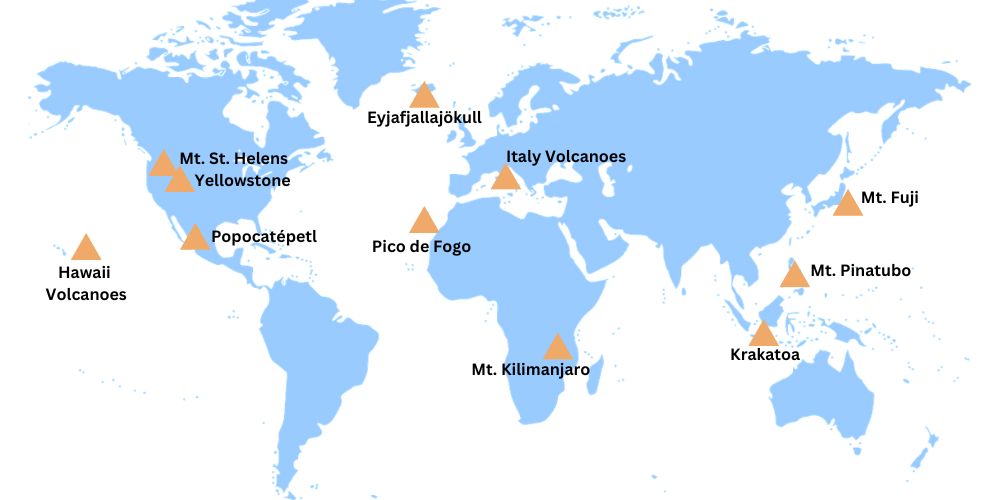Hawaii Volcanoes

Mauna Kea
Image Credit -https://pixabay.com/users/pilgrimpassing-5205025/
In the heart of the Pacific Ocean, the Hawaiian Islands are home to two towering giants, Mauna Loa and Mauna Kea. These colossal shield volcanoes, standing side by side on the Big Island of Hawaii, command attention for their immense size, cultural significance, and diverse geological features.
Mauna Loa
Rising to an elevation of approximately 4,169 meters (13,678 feet) above sea level, Mauna Loa is not only the largest volcano on Earth but also one of the most massive shield volcanoes in terms of volume. Its name, "Mauna Loa," means "Long Mountain" in Hawaiian, a fitting description for the sprawling expanse that covers about 5,271 square kilometers (2,035 square miles).
Mauna Loa is characterized by gently sloping, shield-like profiles formed by the effusion of low-viscosity basaltic lava during eruptions. The volcano's eruptive history is marked by both summit and flank eruptions, contributing to its vast size. The most recent eruption occurred in 1984, and while Mauna Loa is considered an active volcano, it has not erupted since.
Mauna Kea
Adjacent to Mauna Loa, Mauna Kea stands as the tallest peak in the Hawaiian archipelago, reaching an elevation of 4,207 meters (13,803 feet) above sea level. While Mauna Kea is also a shield volcano, its distinctive feature lies in the summit's topography, characterized by cinder cones, calderas, and glacial features.
Mauna Kea is known for its unique astronomical observatories perched atop the summit. The high-altitude, clear skies, and minimal atmospheric disturbance make Mauna Kea an ideal location for astronomical research. The summit is home to a world-class observatory complex, hosting telescopes operated by various international organizations.
Cultural Significance:
Both Mauna Loa and Mauna Kea hold immense cultural importance in Hawaiian mythology and traditions. In Hawaiian cosmology, these volcanic peaks are considered sacred realms, inhabited by deities and revered spirits. The mountains are integral to the creation stories of the Hawaiian Islands, embodying the connection between the physical and spiritual realms.
The summit regions of Mauna Loa and Mauna Kea are considered sacred grounds, and access to these areas is restricted. Native Hawaiians conduct ceremonies, rituals, and pilgrimages to honor the spiritual significance of these majestic mountains.
Environmental Diversity
Despite their proximity, Mauna Loa and Mauna Kea showcase strikingly different ecological zones. Mauna Loa's slopes encompass a variety of climates, from tropical rainforests at lower elevations to alpine deserts at higher altitudes. In contrast, Mauna Kea's summit region boasts a polar desert environment with snow and ice, offering a stark contrast to the lush landscapes below.
Tourism and Adventure
Both Mauna Loa and Mauna Kea attract tourists and adventurers seeking unique experiences. While access to the summit of Mauna Loa is challenging and requires permits, the lower slopes offer hiking trails and opportunities to witness the volcano's diverse landscapes. Mauna Kea, with its accessible summit via a paved road, invites visitors to experience breathtaking views, stargazing, and the scientific wonders of its observatories.
World Volcanoes
